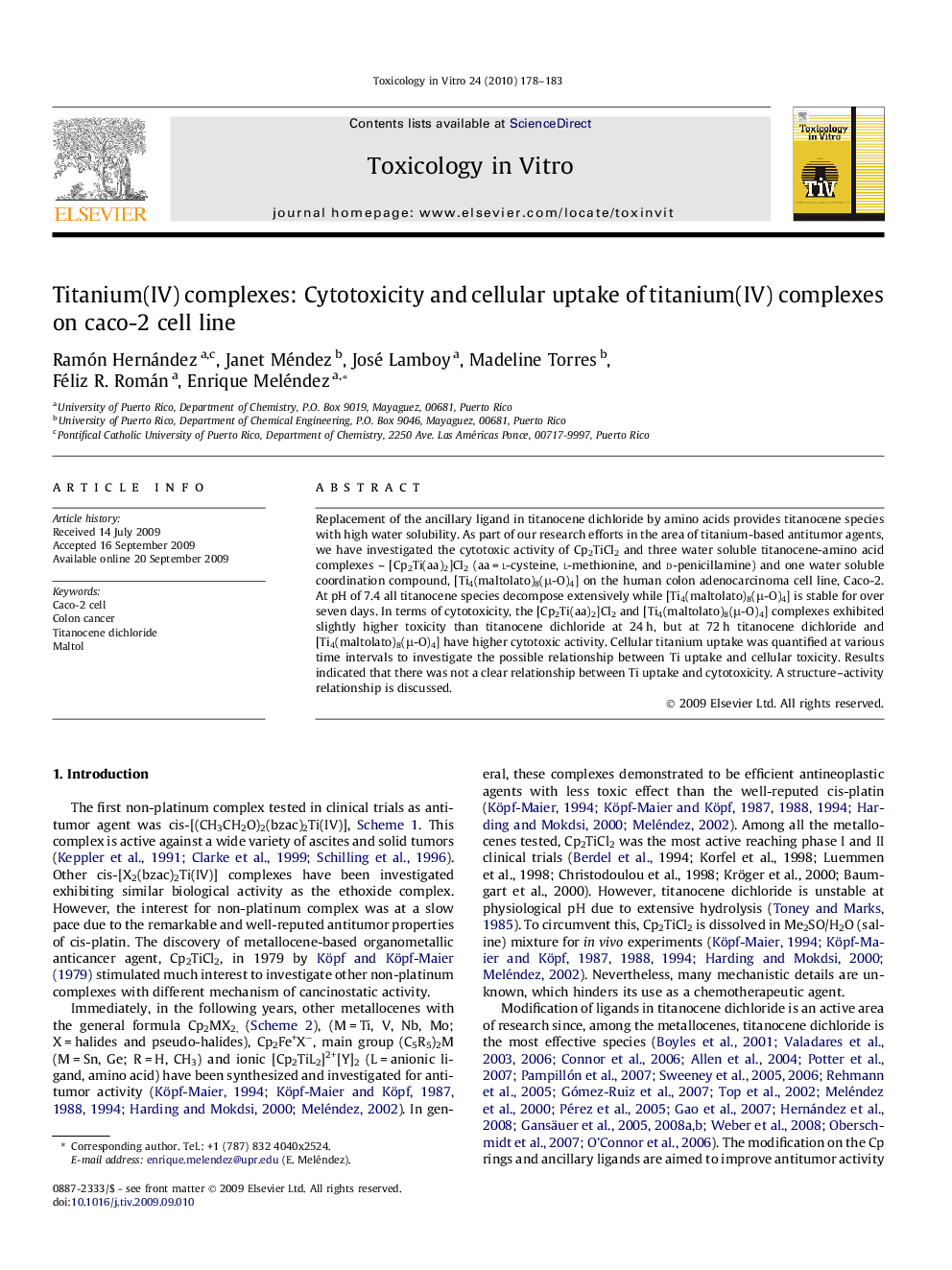| Article ID | Journal | Published Year | Pages | File Type |
|---|---|---|---|---|
| 2603543 | Toxicology in Vitro | 2010 | 6 Pages |
Replacement of the ancillary ligand in titanocene dichloride by amino acids provides titanocene species with high water solubility. As part of our research efforts in the area of titanium-based antitumor agents, we have investigated the cytotoxic activity of Cp2TiCl2 and three water soluble titanocene-amino acid complexes – [Cp2Ti(aa)2]Cl2 (aa = l-cysteine, l-methionine, and d-penicillamine) and one water soluble coordination compound, [Ti4(maltolato)8(μ-O)4] on the human colon adenocarcinoma cell line, Caco-2. At pH of 7.4 all titanocene species decompose extensively while [Ti4(maltolato)8(μ-O)4] is stable for over seven days. In terms of cytotoxicity, the [Cp2Ti(aa)2]Cl2 and [Ti4(maltolato)8(μ-O)4] complexes exhibited slightly higher toxicity than titanocene dichloride at 24 h, but at 72 h titanocene dichloride and [Ti4(maltolato)8(μ-O)4] have higher cytotoxic activity. Cellular titanium uptake was quantified at various time intervals to investigate the possible relationship between Ti uptake and cellular toxicity. Results indicated that there was not a clear relationship between Ti uptake and cytotoxicity. A structure–activity relationship is discussed.
